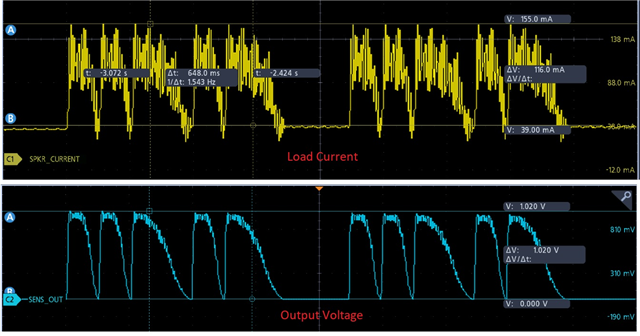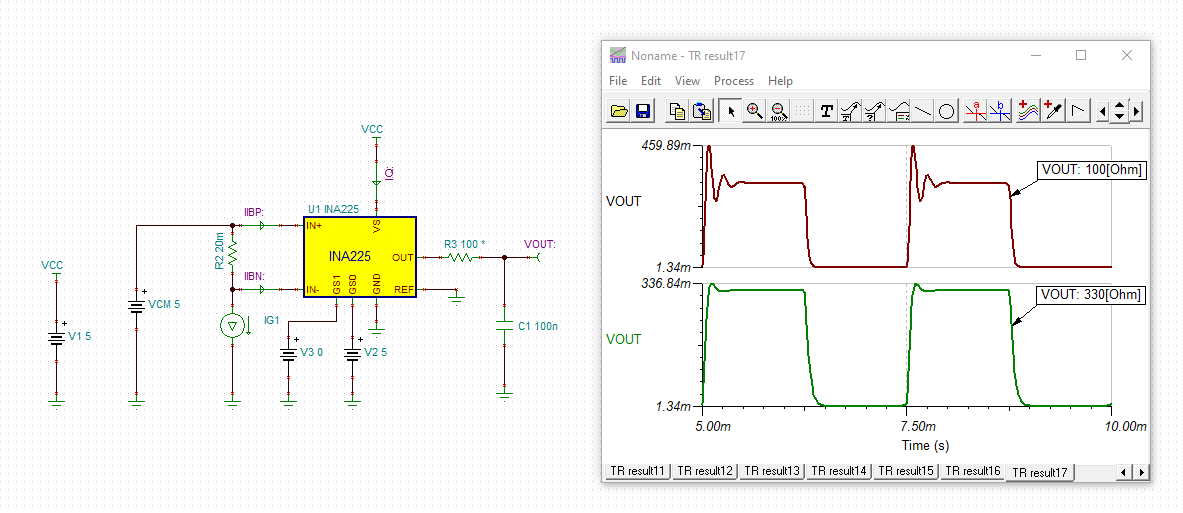Hello Team,
Customer is using INA225 current sense amplifier in one of the design and requested support in clarifying below point.
Issue: Need to set the gain of 100V/V by design. But observing more than 300V/V gain in practical.
20mOhms resistor for current sensing and gain is set to 100V/V.
- The load current observed is 155mA peak. And based on the calculation design should get 310mV peak as output with 20mOhms current sense resistor and 100V/V gain
- But observing 1V at the output of INA225, which seems to be around 322V/V gain.
- Below is the design, the load current and output voltage waveforms. Request to please review the same and share the possible reason for this mismatch. R81 and R84 are mounted, R82 and R83 are not mounted for gain selection as 100V/V.


Thanks, Shinu.


